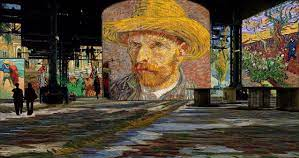
Arquivo para October 20th, 2021
Culture and the great crisis
After analyzing the aspects of homogenization and cultural colonization, Morin will analyze who the average man is and what culture he consumes, he says:
colonization, Morin will analyze who the average man is and what culture he consumes, he says:
“The language adapted to these anthropos is audiovisual, a language of four instruments: image, musical sound, word, writing. Language is all the more accessible insofar as it is the polytonic involvement of all languages” (page 45) and, therefore, it is not specific to new media that only enhances them, and it involves more an imaginary than “of the game that overflows the fabric of practical life” (idem).
This is because “the borders that separate the imaginary realms are always fluid, unlike those that separate the realms of the earth” (ibidem), so a man can participate in the legends of another civilization than adapt to the life of this civilization, and so Morin prepares to talk about the great crisis or great civilizing night, which Morin calls “great craking”.
As technical quality improves, it mediates artistic quality, says Morin: “they go up in industrialized culture (writing quality of articles, quality of cinematographic images, quality of radio broadcasts), but the irrigation channels relentlessly follow the main lines of the system (page 50).
Morin separates the cultural currents coming from Hollywood into three main currents: the one that “shows the happy end, the happiness, the success; the countercurrent, the one that goes from The death of a Traveling Salesman to No down payment [AC/DC Rock], shows failure, madness, degradation” (p. 51), but there is a third current that he calls ” black”.
This is “the current in which fundamental questions and contestations ferment, which remains outside the culture industry: it can partly usurp, adapt to itself, make publicly consumable certain aspects of, say, Marx, Nietzsche, Rimbaud, Freud, Breton , Péret, Artaud, but the condemned part, the antiproton of culture, its randium is left out” (idem).
Morin describes this anti-climax at the beginning of chapter 5 “The great ‘cracking”: “long playing records and radio multiply Bach and Alban Berg. Pocketbooks multiply Mlaraux, Camus, Sartes. The reproductions multiplied Piero dela Francesca, Masaccio, Césanne or Picasso” (p. 53), culture seemed to be democratized by the cheap book, the disc, reproduction, as recommended by Walter Benjamin, but the result was vulgarization, because the “culture cultivated” is neither the mainstream nor the specific in mass culture.
The imaginary leaves the rites, parties and dances and goes to radio, television and cinema, there “those ghost spirits, geniuses who permanently pursued archaic man and reincarnated in his parties” (page 62), now they are “rushed away by printed culture”, mass culture breaks “the unity of archaic culture which, in the same place, all participated at the same time as actors and spectators in the party, rhythm, ceremony” (p. 62), spectator and show are physically separate.
This transformation of a “party man” follows what we call audience, audience and spectators: “the immediate and concrete he becomes a mental tele-participation” (p. 63(, this mass media (now confused with the networks, which is something else), while “reestablishing the human relationship that destroys the printed material”, “it is at the same time a human absence, the physical presence of the spectator is, at the same time, a physical passivity.” (page 63 ).
Mass culture maintains and amplifies a “voyeurism”, more broadly: “a mirror and glass system, movie screens, television videos, glass windows in modern apartments, Plexiglas in Pullman cars, airplane shutters, always some something translucent, transparent or reflective separates us from physical reality” (pages 72-73) and all this was prior to the new media, depositing to them only this great “cracking”, is to ignore the construction (or historical deconstruction) of the imaginary , folklore and festivals, which began even before the last century with printed culture, enlightenment and idealism.
Attempts to reactivate “cultivated” culture are not lacking, as we have already discussed, through the same mass media that vulgarize and destroy the substance of human culture, there is no lack of vivid works by Van Gogh that Akira Kurosawa animated in cinema, of large public events with “ animated video-mapping” by Vang Gogh (made at the Atelie des Lumiéres, in Paris, photo), who presented in 2018 the work of Gustav Klimt, also animated.
The cultural crisis is not just its own work, its root is the thought and development of a mass culture of idealism, of an objectivism that ignores the human.
MORIN, Edgar. (1997) Cultura de massas do século XX. (20th century mass culture). trad. Maura Ribeiro Sardinha. 9ª. edição. Brazil, Rio de Janeiro, Ed. Forense.

